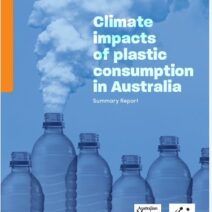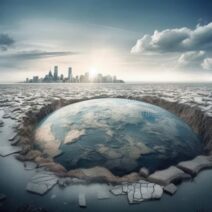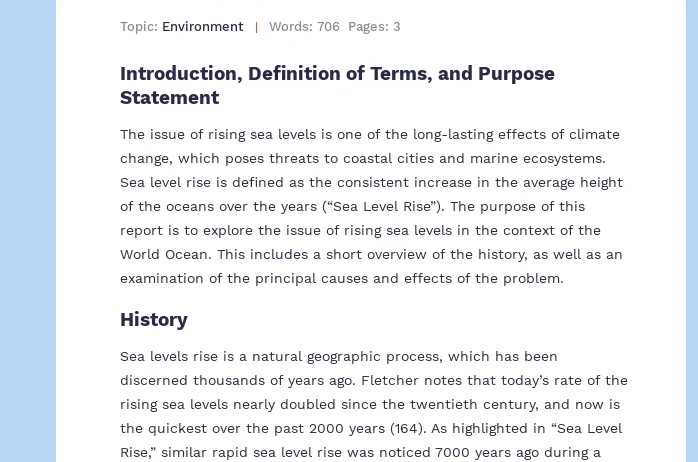Rising sea levels represent one of the most pressing challenges of our time, a phenomenon that demands attention as it creeps forward, much like the relentless tide itself. The increase in sea levels can be likened to a whispering threat, slowly encroaching upon the coastlines and ecosystems of our planet. This intricate phenomenon is a culmination of various natural and anthropogenic factors, leading to profound implications for both human society and the environment. Understanding the myriad elements that contribute to rising sea levels requires an exploration of its history, causes, and far-reaching effects on a global scale.
Climate Change: The Catalyst of a Troubling Trend
The primary driver of rising sea levels is climate change, a profound alteration in the Earth’s climate caused largely by human activities such as the burning of fossil fuels and deforestation. This alteration leads to the greenhouse effect, trapping heat in the atmosphere and raising global temperatures. The warming oceans can be likened to a kettle on the stove, gradually reaching a boil. As water heats, it expands, contributing to the overall increase in water volume. With each increment of warming, the oceans swell, pushing against the shores of our terrestrial world.
Additionally, the melting of polar ice caps and glaciers plays a pivotal role in this dynamic. The ice sheets of Greenland and Antarctica are colossal in size, and their melting acts as a significant contributor to rising sea levels. This process is exacerbated by the warming climate, akin to a candle melting under an insistent flame, where once-solid ice gives way to liquid water, irrevocably altering the landscape of our planet. Scientists estimate that the melting glaciers and ice sheets add approximately 3.2 mm to global sea levels each year.
The interplay of these factors is complex, revealing a grim tapestry woven by years of negligence toward our environment. The narrative is not merely scientific; it is deeply human. Coastal communities, often the beating hearts of cultural and economic activity, now face an uncertain future. The growing intensity of storms, rising tides, and coastal erosion paint a vivid picture of what is at stake.
The Impact on Coastal Communities: A Looming Dilemma
The encroachment of the sea has a profound impact, especially on coastal communities worldwide. Imagine a vibrant city thriving on its shoreline, bustling with festivals, markets, and daily life. Yet, as sea levels rise, that same city faces an existential threat. Saltwater intrusion compromises freshwater supplies, turning once-viable agricultural land into brackish wastelands. Fisheries suffer as their habitats are disrupted, leading to economic insecurity for communities dependent on these natural resources.
Furthermore, rising sea levels increase the frequency and severity of flooding events. Storm surges, fueled by climate change, can devastate infrastructure, leading to exorbitant costs for reparations and displacement. Homes, businesses, and livelihoods are swept away, creating a cycle of social upheaval. The plight of displaced individuals, often referred to as “climate refugees,” highlights the human aspect of this crisis. They are the unseen casualties of something much larger, striving to keep their lives together while grappling with a reality that seems insurmountable.
Moreover, UNESCO has reported that certain island nations, such as the Maldives and Tuvalu, are at risk of becoming uninhabitable due to rising sea levels. These nations serve as poignant reminders of our interdependence with our environment, where each rise in the tide can wash away not only land but also cultural heritage and identity.
The Global Response: A Call to Action
In light of the grave implications posed by rising sea levels, a multifaceted global response is essential. Mitigating climate change through a fundamental transition to renewable energy sources offers one pathway to addressing the root cause. Embracing sustainability in both lifestyle and policy can serve as a barrier against the impending tide. Innovations in technology, such as sea walls and sustainable urban planning, can provide immediate protection for vulnerable areas. However, these are merely stopgaps; the real battle lies in reducing greenhouse gas emissions and prioritizing ecological restoration.
International cooperation is indispensable. Agreements such as the Paris Agreement signal a collective acknowledgment of the crisis at hand. Yet, commitments must translate into actionable steps. The responsibility to tackle climate change is not solely relegated to governments; communities, businesses, and individuals must engage actively in environmental stewardship. Education and awareness can catalyze local initiatives, empowering individuals to protect their environments and advocate for policy changes that prioritize ecological integrity over exploitation.
Conclusion: The Tides of Change Await
The phenomenon of rising sea levels is a siren call, urging humanity to heed the signs and reclaim its relationship with nature. As we stand at the precipice of potential loss, we must recognize our role in shaping the future. The world of tomorrow hinges on the decisions we make today. The rising tide is not just a passive observer of this unfolding drama; it is an active participant, a reminder of the delicate balance between human existence and the natural environment. By forging a sustainable path forward, we can ensure that we do not become casualties of our own indifference, but rather stewards of a resilient future.








